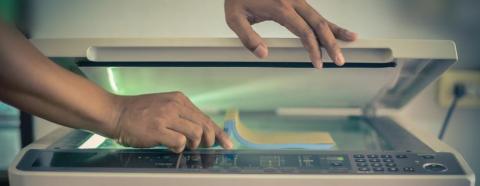As information passes through your internal processes, much of it is funneled through devices. From laptops and PCs to smartphones and tablets, data is being collected on a continual basis. Your copiers are no exception.
1. User Authentications
Are your employees required to authenticate before using your printers and copiers? It’s a necessary step and is a standard feature on the latest business-grade copiers. PIN codes, passwords, smart ID cards and even biometrics are now available to keep unauthorized users from accessing company copiers. Contact your equipment provider if you aren’t sure how to deploy these features.
2. Pull Printing and Secure Printing
Documents released and then left unattended in print trays are a common source of security breaches. Employees regularly—and often unintentionally—view confidential information due to this practice. Secure pull printing features require users to log in with a password before networked copiers release a print job.
3. Hard Drive Security
As documents pass through the scanning bed, your copiers save an image on the hard drive. When you consider what may have passed through your copiers in the last few years (HR documentation, financial data, business plans, etc.), you’ll understand why it’s critical to use extra security precautions when protecting your hard drives. Here’s what you can do.
- Data encryption makes the information stored on hard drives unreadable to hackers, even if they do manage to access it.
- Role-based strategies limit employee access to copier hard drives on a need-to-know basis.
- Data overwrite is a solution used to remove information from copier hard drives. Automatic overwriting or scrubbing is available on some copiers.
- Hard drive removal is a fool-proof solution when your copiers are taken out of service. Your provider may be able to remove and destroy the hard drive for you.

